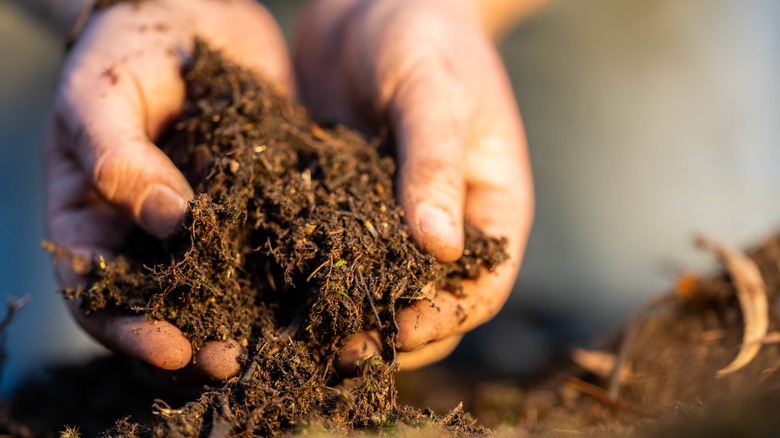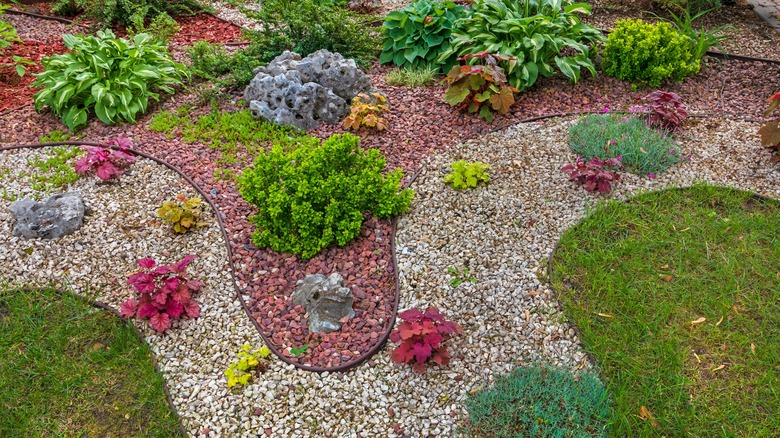If You Start To Notice This On Your Plants It May Indicate You Have A Soil Problem
Does your garden have plants that don't look their best? Then, you may have a serious issue. First, you need to do is assess the area and nearby plants. If you don't see pests, rot, sun damage, or other problems, but start to notice pooling or standing water near your plants, it may be an indicator that you have a soil problem.
A common explanation for this stagnant water is soil compaction. Soil consists of different minerals and materials like rocks, clay, sand, and silt. Healthy loam has pockets of space or pores that allow air and water to circulate to all parts of the plant and even your grass. However, pressed soil doesn't have the room for these nutrients to travel and instead, gets stuck on the soil's surface, pooling as you continue to water the plant. This dirt can be compacted through many ways, including foot and vehicle traffic, rain, and other natural plant progressions. You'll also want to think twice before tilling your garden because that may be causing this compaction as well. Pooling water leads to plant issues like badly formed roots, dense soil, discolored leaves, and stunted growth. To test your earth, grab a soil probe or metal pipe and shove it in the ground. You'll know you have compacted soil if the stick can't break the surface. Don't worry because you can easily place out mulch and ground covers or aerate your ground to stop this pooling water.
Placing out mulch or ground covers as well aerating your soil are great ways to stop standing water
Stagnant water is not the end-all, be-all when it comes to your garden. Instead, prevent and stop the issue by placing out mulch or ground covers and aerating the soil. Forming a protective layer from rainfall, mulch like wood chips, gravel, and straw can deter your soil from being tightly pressed. When it breaks down, mulch slowly and naturally aerates the ground. Add ground cover plants to help aerate soil by breaking apart the pressed layers and adding organic materials during decomposition. Moss phlox, barrenwort, and sedums are some of the best ground covers for flower beds that help with standing water.
Since your soil needs air circulation, one of the easiest ways is to aerate it. Depending on the type of plant you have and its size, there are multiple ways to aerate the soil, including digging holes with a stake or a spike, or adding earthworms to your soil. You can also try out different methods, like core, spike, manual, and liquid. Each one comes with its own guidelines, which you should follow. You can even use chopsticks to aerate your houseplant soil. Post-aeration is also crucial for your plant's well-being. Improve its growth after aeration by adding compost or fertilizer for a boost of nutrients. Be mindful because over-aeration can lead to its own slew of problems with soil structure and plant roots.

